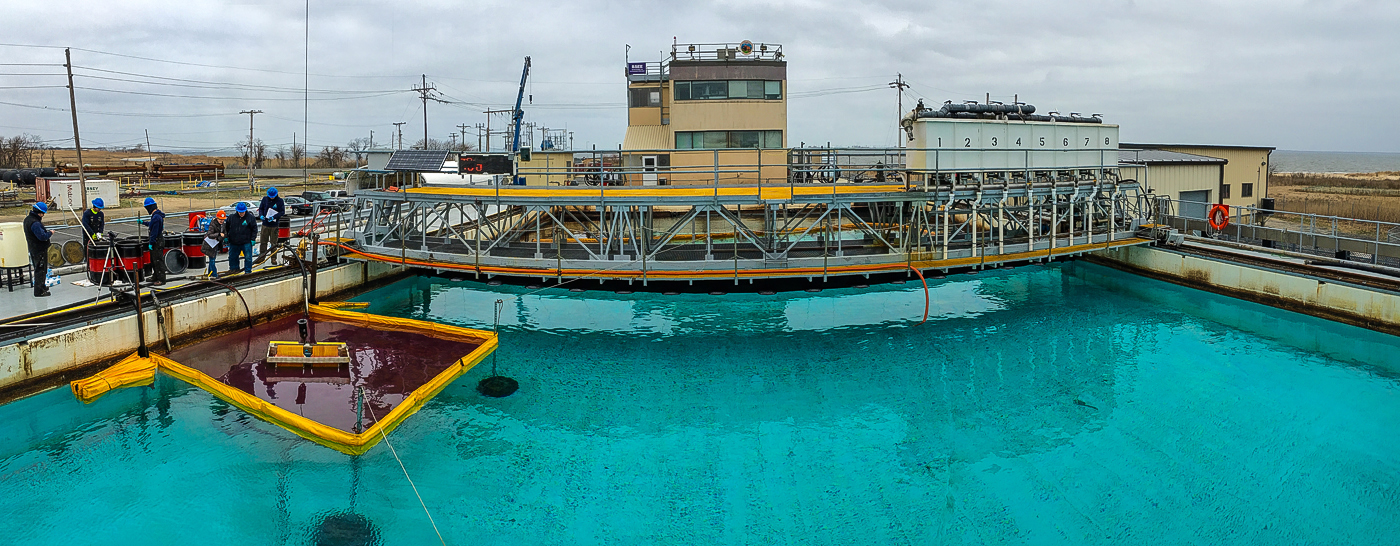
Managing Ohmsett and supporting its customers is one of the three essential roles of BSEE’s Oil Spill Preparedness Program. For decades, Ohmsett has hosted domestic and international efforts to improve oil spill response strategies and technologies. When the Environmental Protection Agency (EPA) first opened the facility in 1972, it was called the Oil and Hazardous Materials Simulated Environmental Test Tank. Today the facility is managed by the Department of Interior by BSEE’s Oil Spill Preparedness Division (OSPD) and is officially titled the National Oil Spill Response Research and Renewable Energy Test Facility. However, it is most commonly referred to by its short name “Ohmsett”. Ohmsett management responsibilities are overseen by the Response Research Branch in BSEE’s Oil Spill Preparedness Division.
Many of today's commercially available oil spill response products have been tested at Ohmsett and a considerable body of knowledge, including equipment performance data, has been amassed at the facility over the past several decades. This valuable data is used by manufacturers for product development and validation, oil spill removal organizations to improve equipment procurement and deployment strategies, and emergency response planners for drafting and approving oil spill contingency plans. The facility is available for use by government agencies, academia, and private industry from around the world. Representatives from more than 36 countries have conducted testing or training at the Ohmsett facility.
Located at Naval Weapons Station Earle, Waterfront, in Leonardo, NJ, research and training activities primarily occur in Ohmsett’s 667-foot long tank, which is filled with 2.6 million gallons of saltwater. In the tank, facility staff and engineers can simulate realistic spill conditions – they can introduce real oil and dispersants, generate waves of various heights and frequencies, and drive a moveable bridge to monitor experiments and training activities. Government agencies including the U.S. Coast Guard, private industry, and oil spill recovery organizations regularly train their emergency response personnel using various crude oils and full-scale equipment. Researchers explore a variety of subjects and technologies including remote sensing of surface slicks and suspended oil plumes; mechanical recovery and containment including sorbents, skimmers, and booms; and chemical treating agents such as dispersants and herders.
For a deeper dive into oil spill response and research, visit the Ohmsett website to access publications, videos, testing schedules and other details about this amazing facility.
